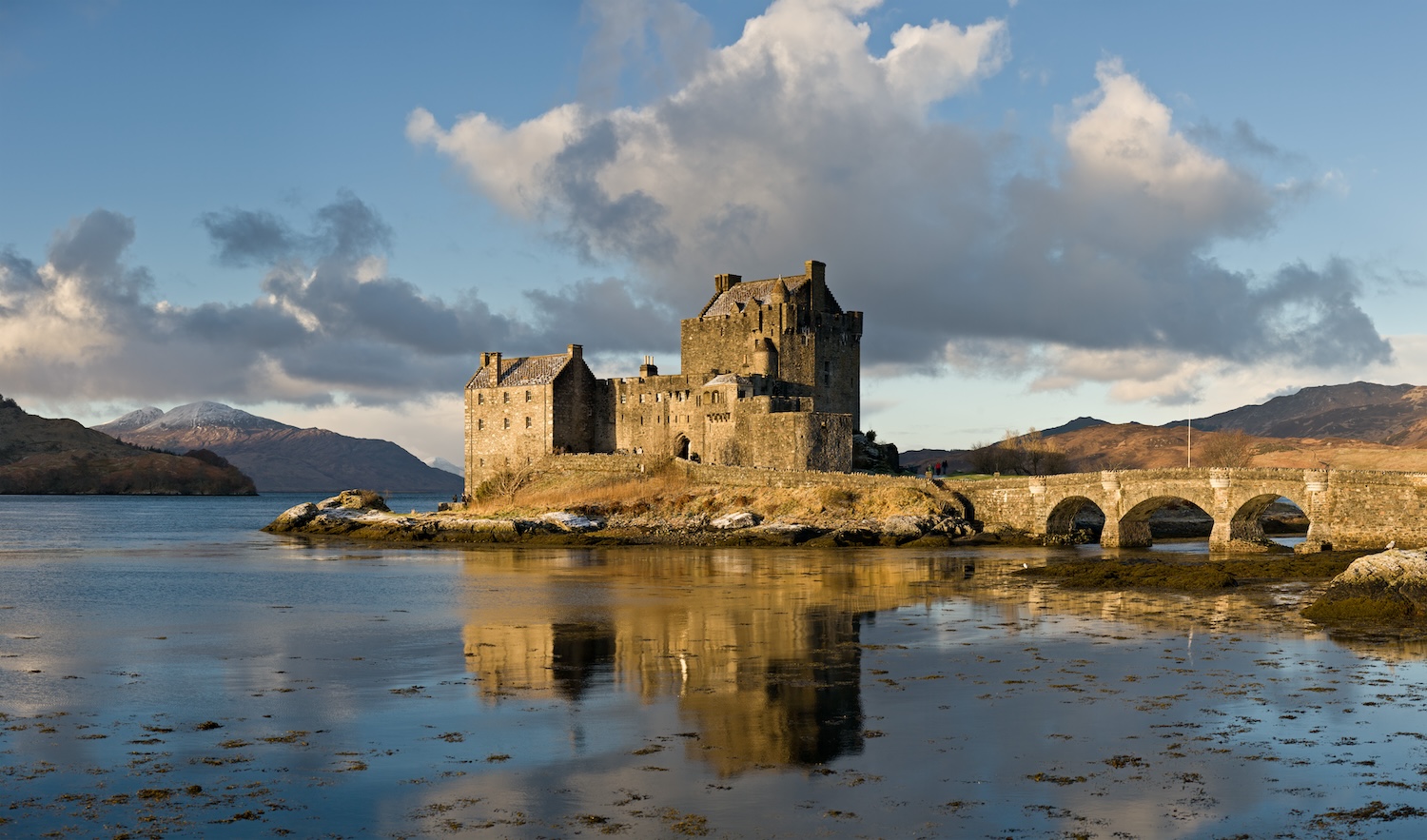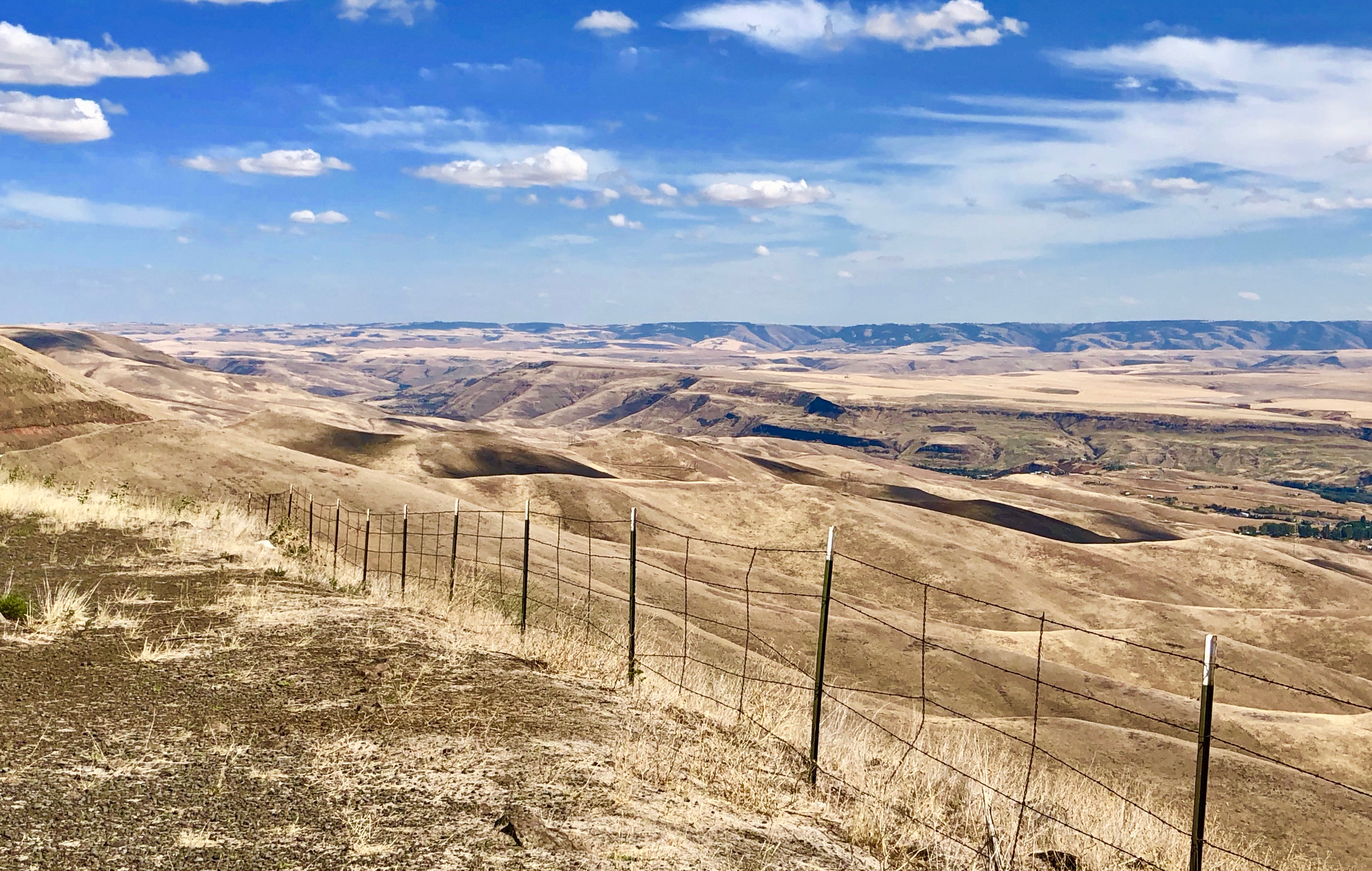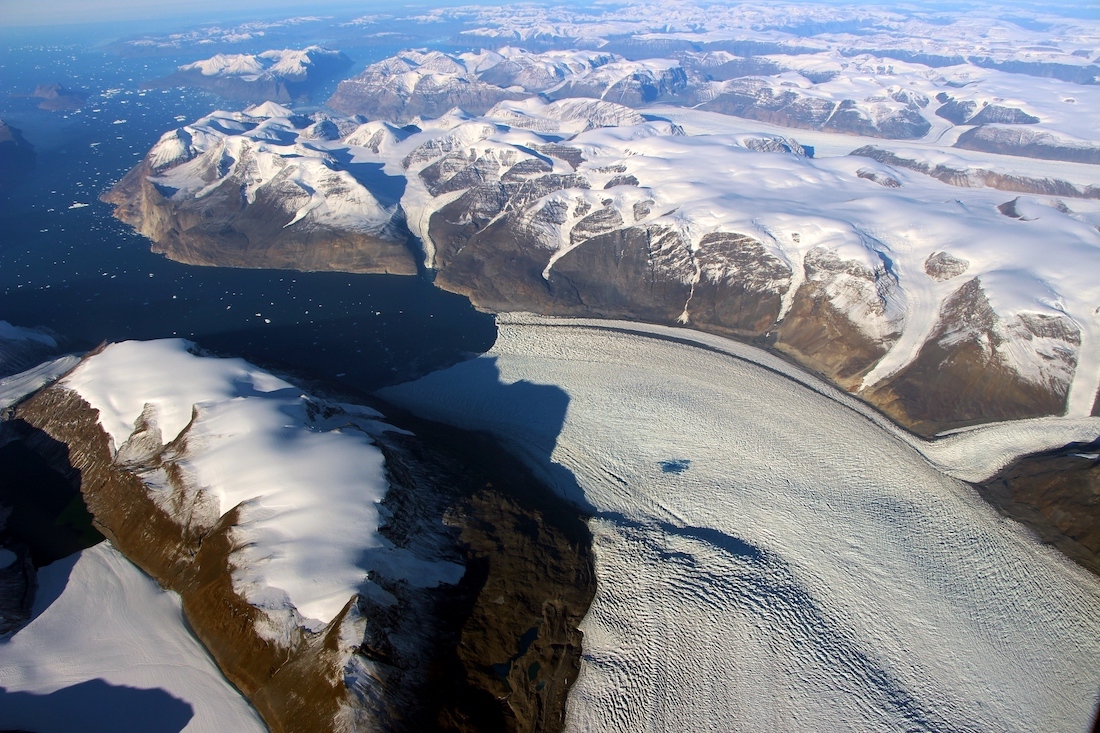
GREENLAND AND ALL THE REST: ICEBERGS, INUITS, AND A SPECIAL GUEST
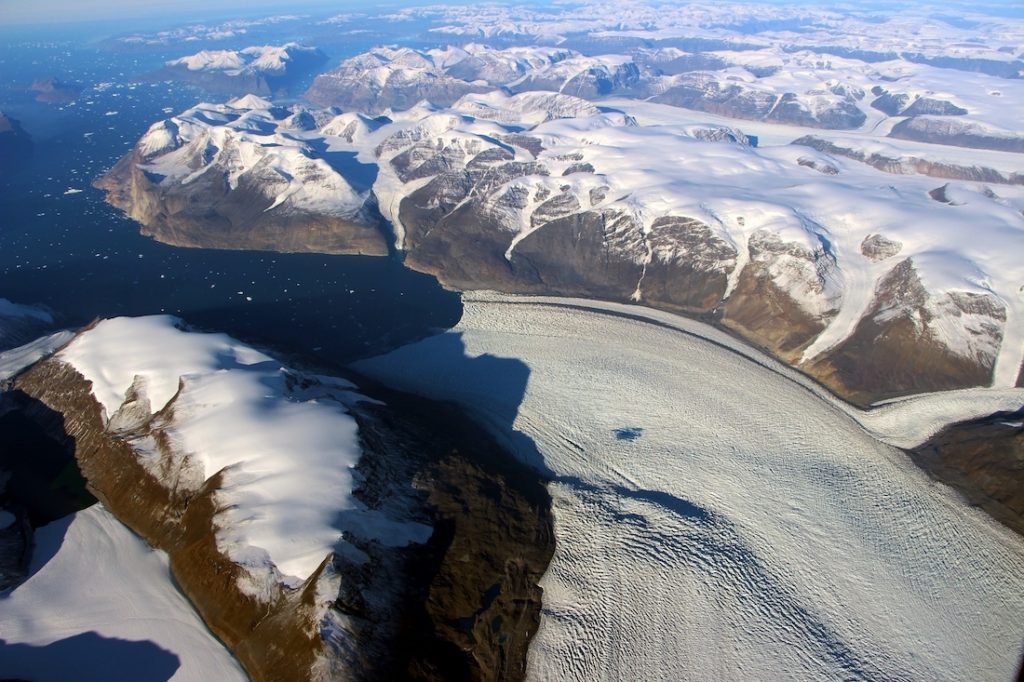
Never saw an iceberg before, but now that I have….I wouldn’t blame the iceberg either, for that Titanic thing.
Icebergs do what they do and will for the foreseeable future at least until all the glaciers, the iceberg parents, melt away due to global warming. (Don’t think so? Science for the doubters, right here/click here.)
So we are thrilled we saw some of the monsters while cruising through Greenland’s Prince Christian Sound, then down the infamous Iceberg Alley between Greenland and Newfoundland. We saw icebergs doing what icebergs do, just living their best lives, floating and melting and sometimes crashing into ships. (Not our ship – yay. Thank you modern radar.)
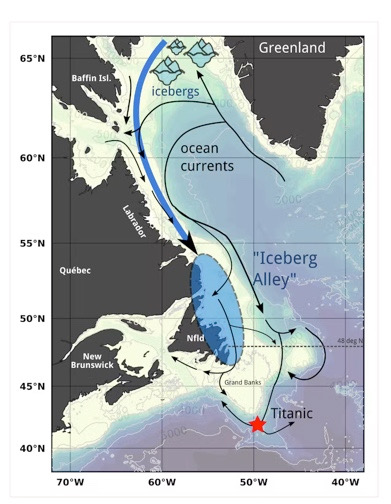
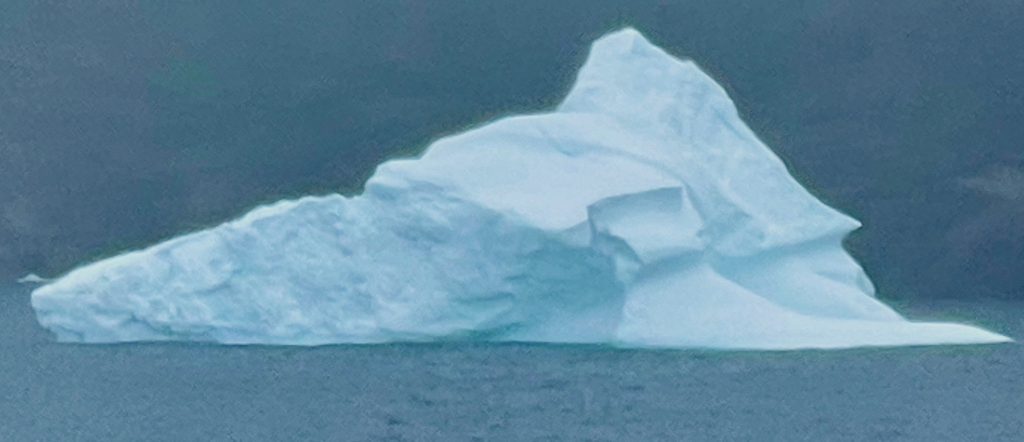
No. Let me correct that. Icebergs seldom if ever crash into ships. The ships crash into THEM. SNL’s Bowen Yang’s Iceberg made that point with flair, when he complained that the Titanic crashed into HIM. (His Iceberg hat creation/oh my so good. See clip here). I agreed with the Iceberg’s other point, as well:
“What about the water, Colin?” the Iceberg whined. “No one is talking about the WATER….no one is cancelling the ocean….they drowned, Colin.”
Sadly, indeed they did.
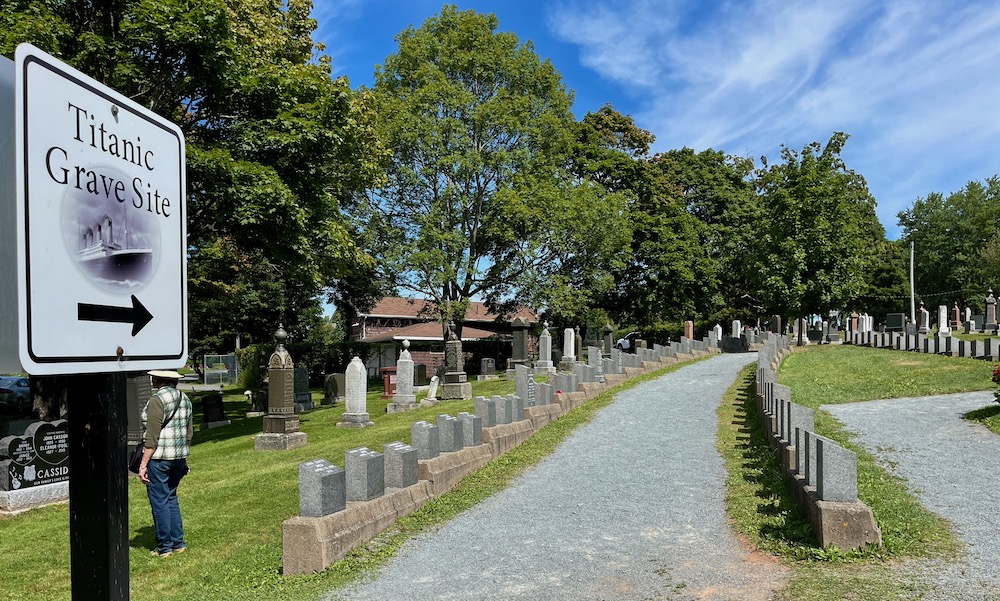
We did not drown but shivered in the drizzly weather, as Greenland’s white glacial world passed slowly by outside and wowed us with its majesty. Our captain squeezed the ship deep into the fjord of Prince Christian Sound, twirling the massive vessel around in a pivot at the narrowest point. The fjord’s steep cliffs seemed so close that I was tempted to reach out to grab some of the gorgeous blue glacier ice and plop it in my drink.
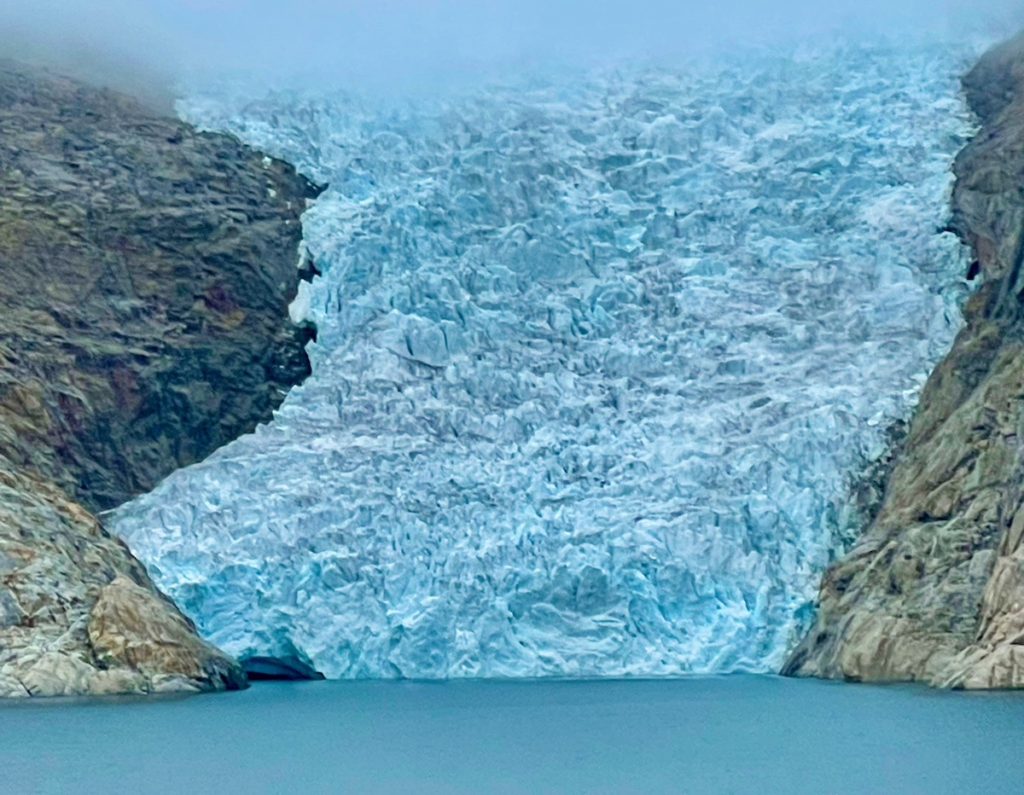
Not the grey dirty ice, of course, and yes there was plenty of that. Moving glaciers constantly scrape over and smash up rock landscapes underneath, and when the melting happens they leave a frightful mess behind.
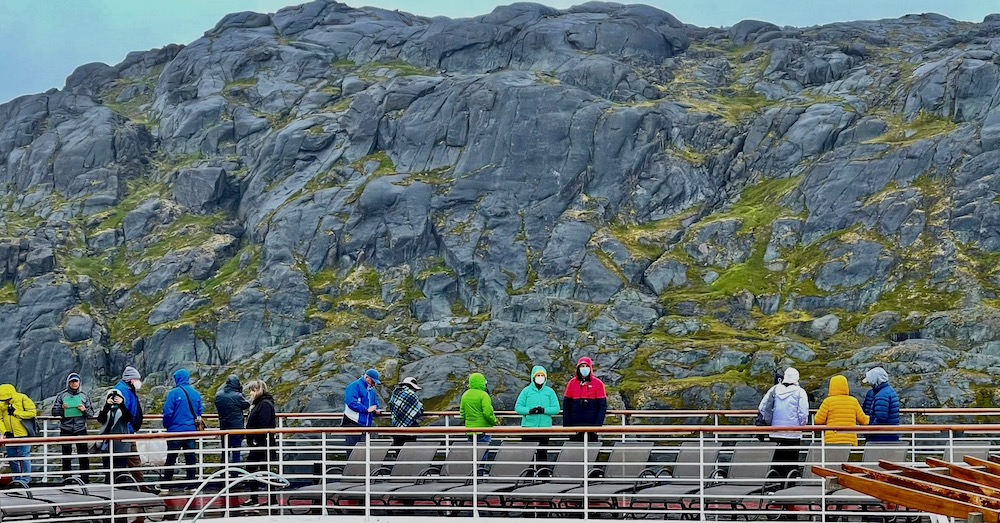
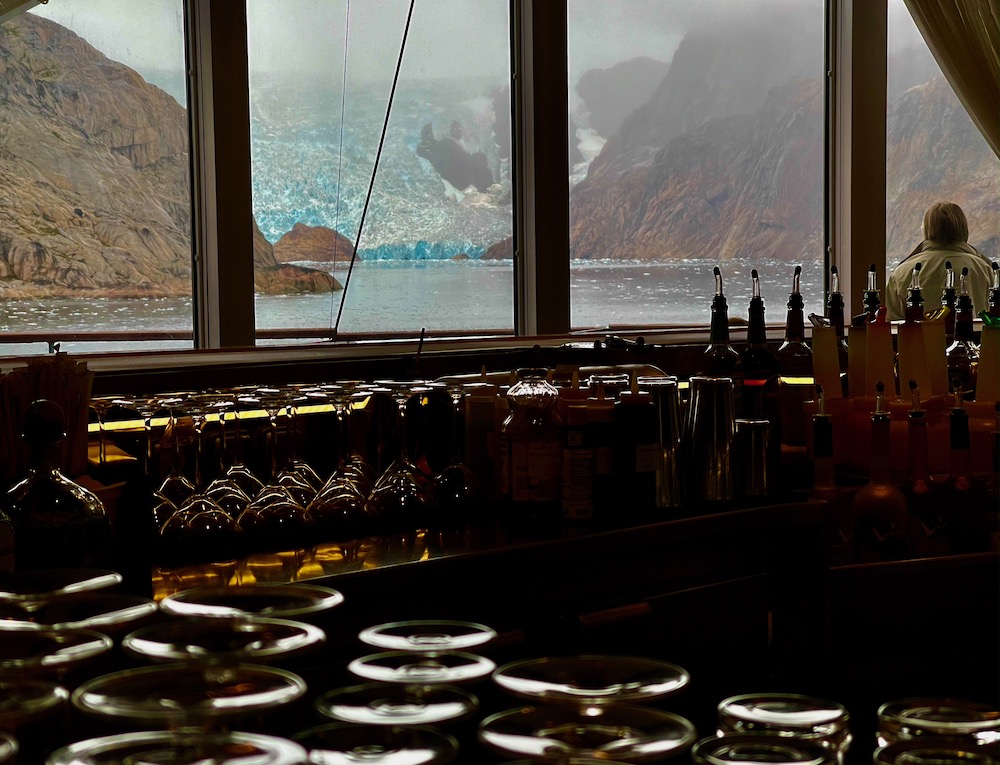
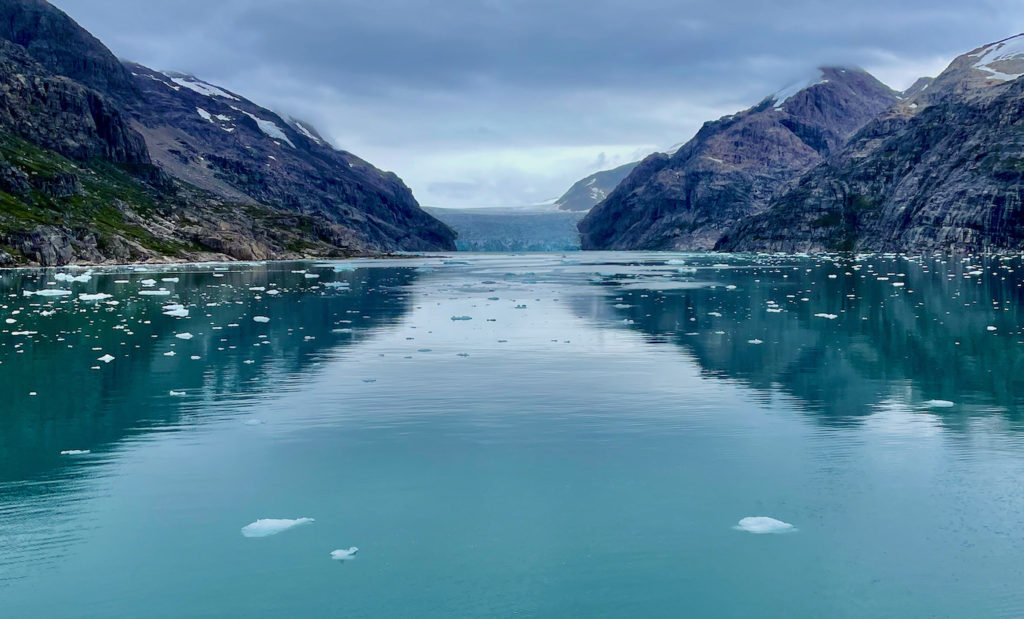
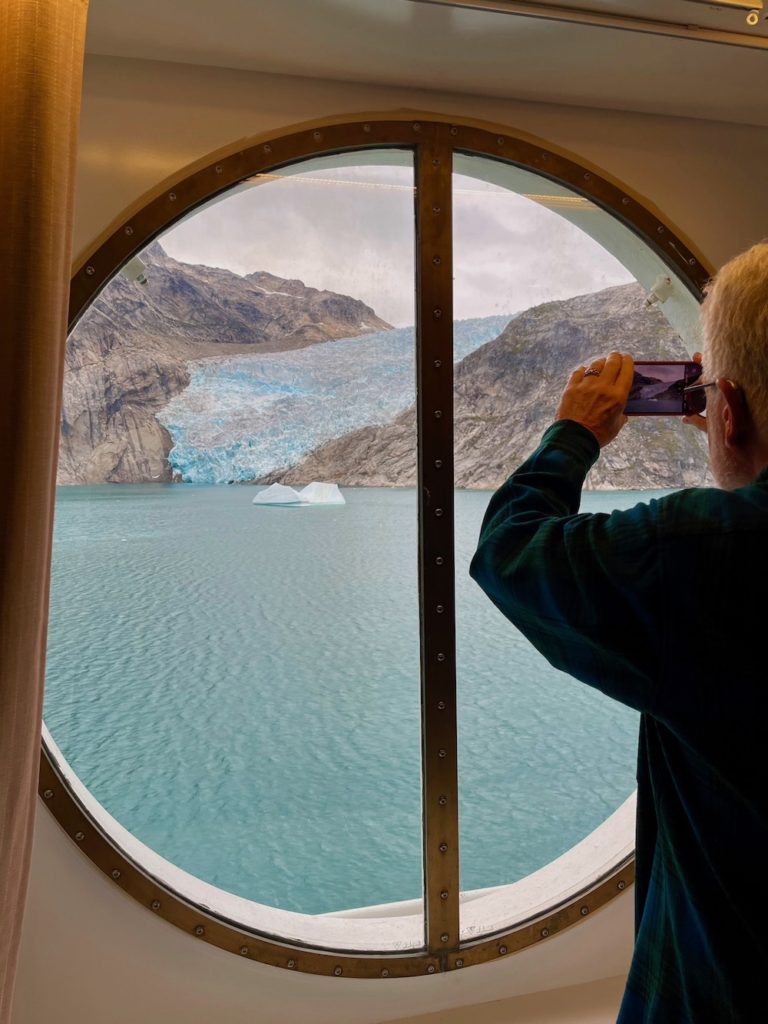
Summit’s crew seemed as thrilled as we were with the stunning glacial panoramas as galley chefs, bartenders, wait staff, and cabin attendants joined us at the railings, snapping selfies for loved ones back home.
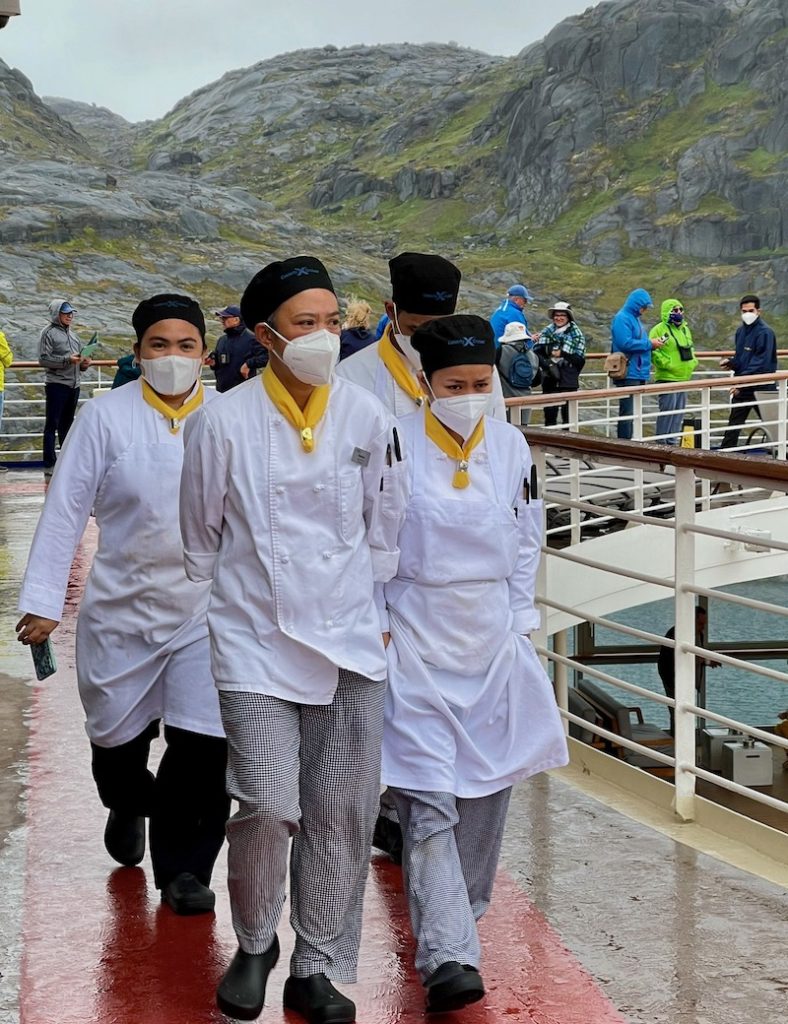
The next day we sailed under a sunny sky to make anchor in the harbor of Qaqortoq, the largest town in Southern Greenland (large is relative – about 3,000 inhabitants). Cruise ships stop in Qaqortoq often as long as the weather cooperates, since the tiny village serves as a way station between continents for the big ships.
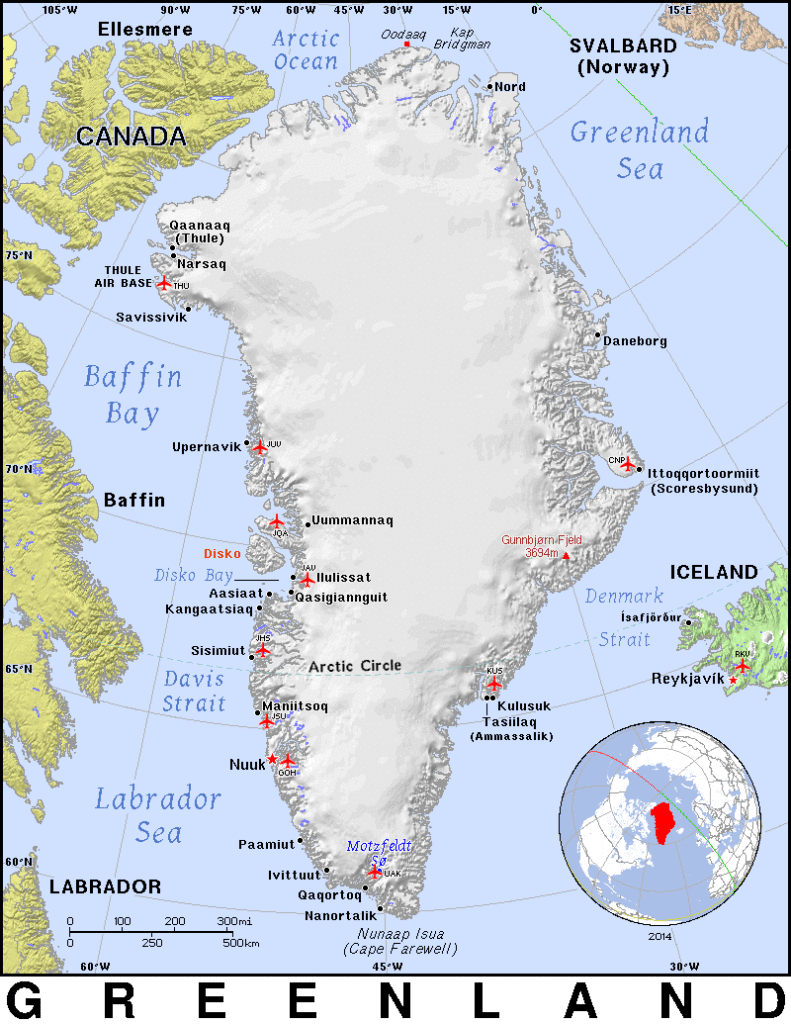
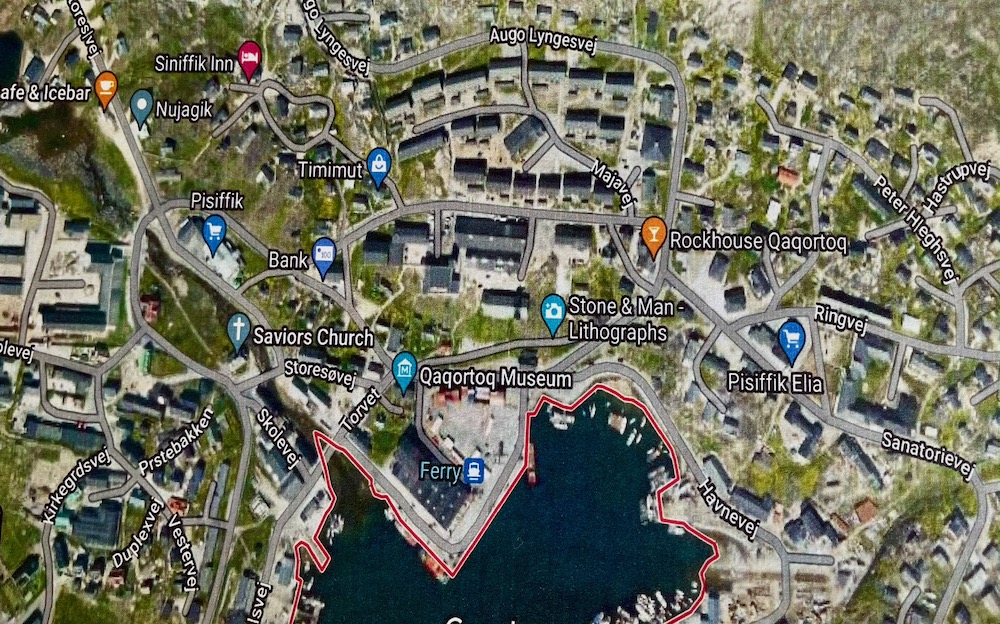
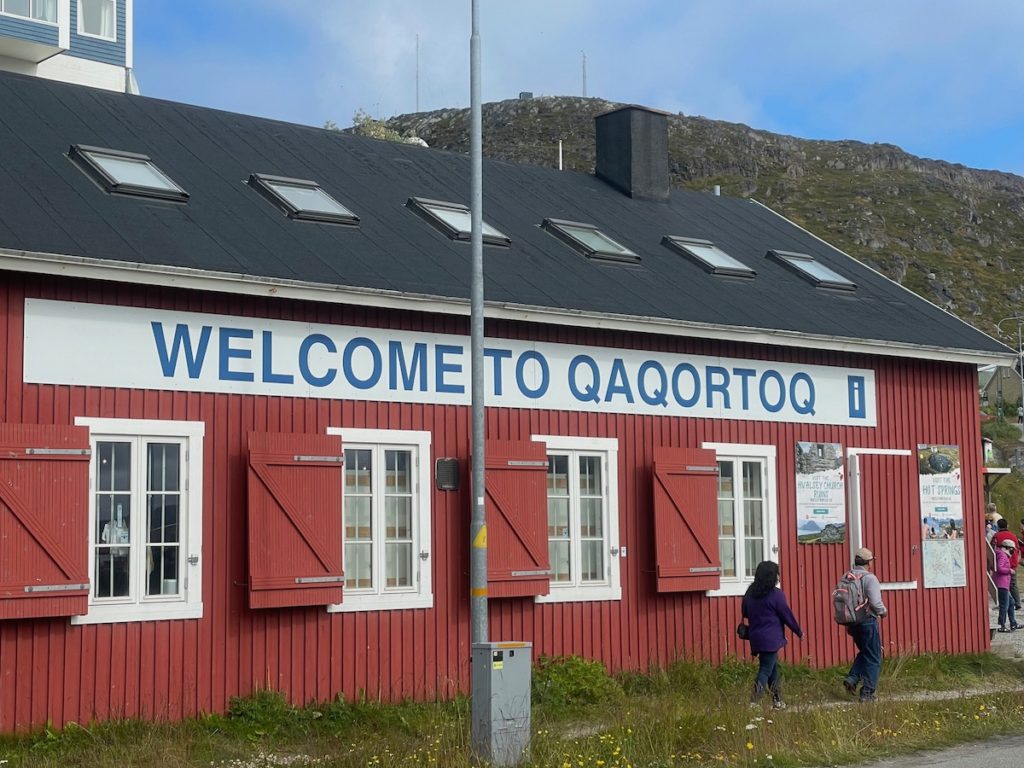
Padre and I rode the tender into town and climbed up and down the hillsides like old goats, finding a grocery store for expensive essentials and checking out the views. Our travel companions Pat and Jean joined a ship tour where they met a Greenlander named Christina, who invited them into her home. Here’s Pat’s account of their visit (and yes, we wish we’d joined them – so interesting!):
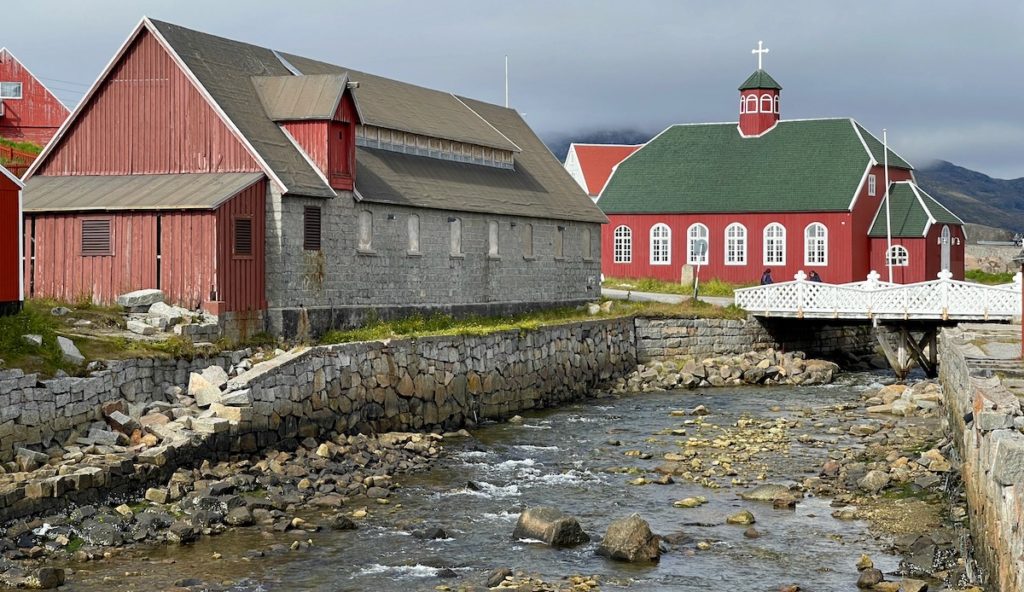
THE GREENLANDERS – by Pat
56,466. That’s how many Greenlanders there are –for an entire country of 836 square miles which is many times larger than Iceland and its population of close to 500,000. But the Greenland identity is distinctly Greenlandic even though restrained by challenges of terrain, weather, and isolation – one that has persisted through thousands of years with its own culture, language, and political system. The terrain is so challenging that there are very few roads from one seaside settlement to another. For a Greenlander to visit another village, it is an all-day trip, often involving a helicopter ride these days, but one can imagine that in the past Greenlanders had to travel by boat. Not surprisingly, most Greenlanders live close by the sea.
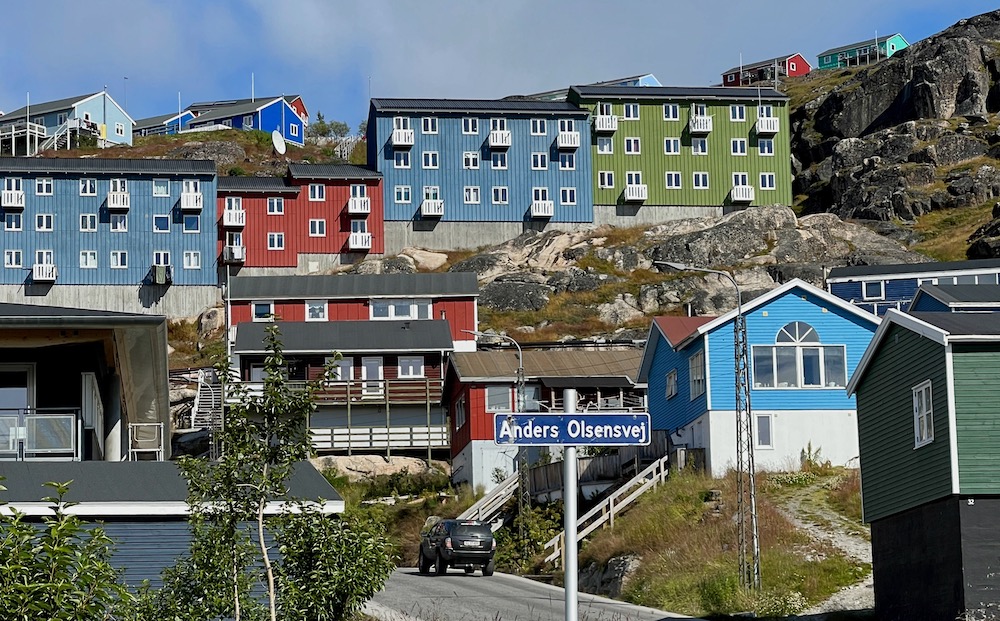
How green is Greenland? Not very. Just rugged dark-stained rock on the slopes rising from the harbor–steep paths with vividly-painted houses scattered on the hillside and a few shops along the way. Few trees and no fields of wild (or cultivated) flowers to soften the scenery. Just those brightly painted homes to cheer up the scenery. No matter because the Greenlanders and their culture are colorful enough.
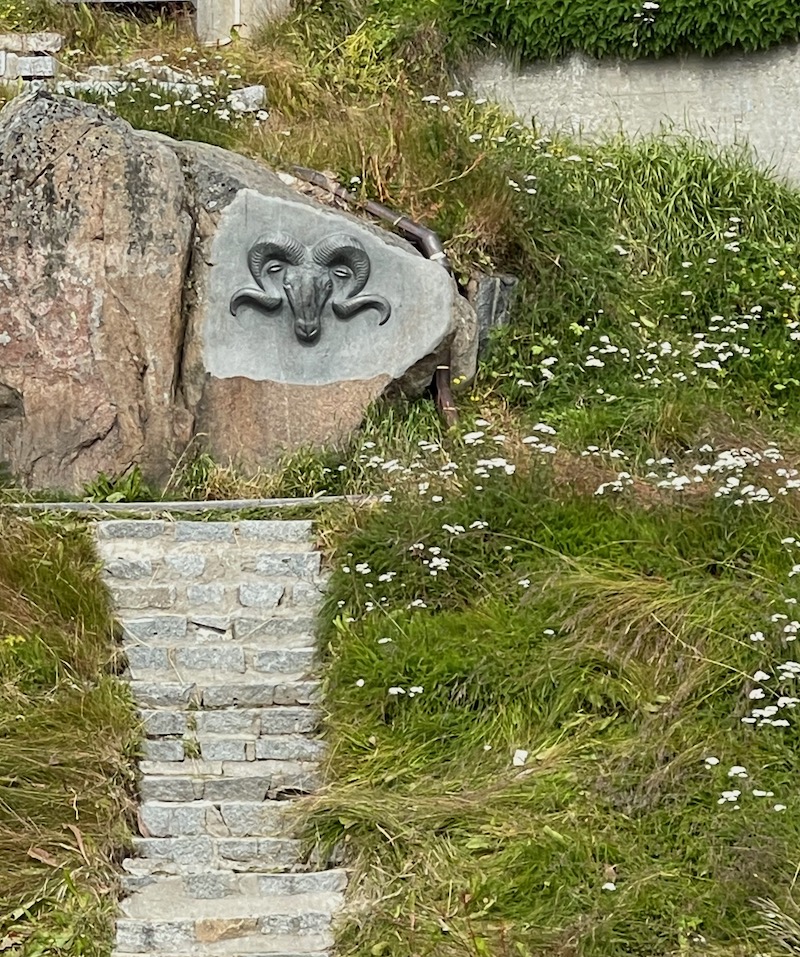
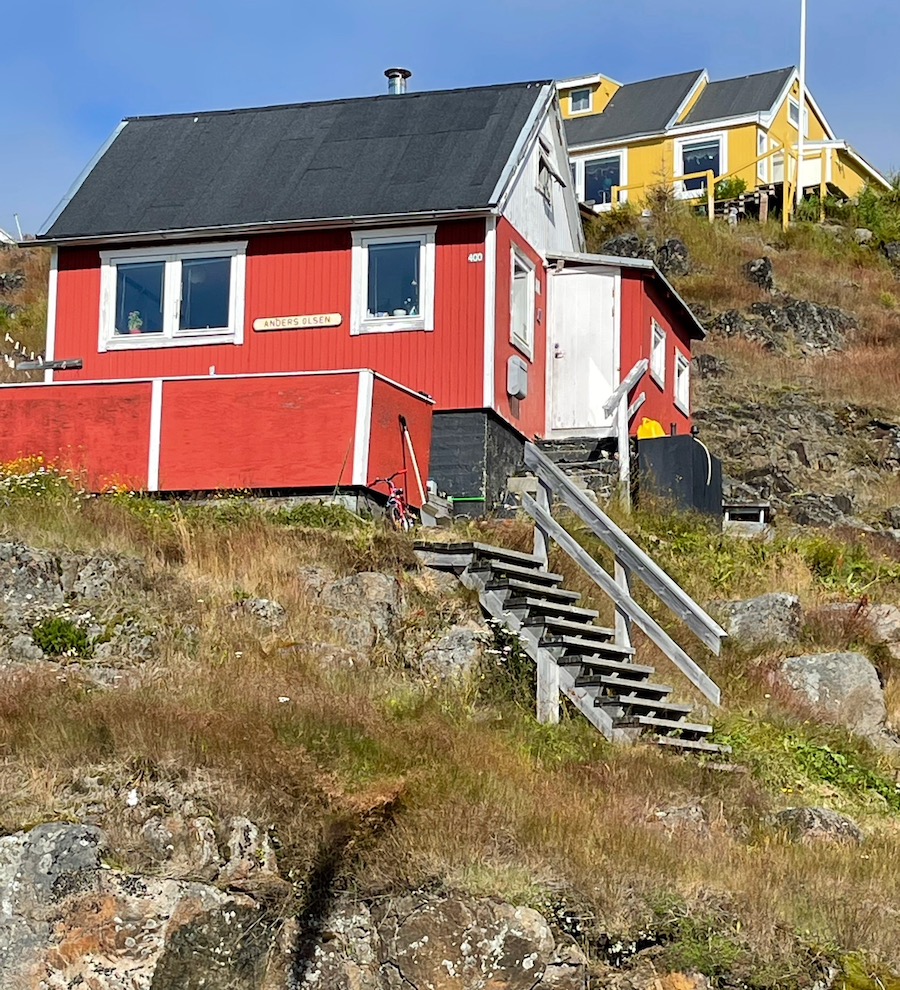
We entered the Qaqortoq, Greenland port on a sparkling morning greeted by a small craft fair displaying all sorts of handmade goods including knitted hats and socks and beaded trinkets all displayed on rickety tables. The Inuit ladies were eager to make a sale but a bit forbidding to approach as they stared at us, these unknown humans from the great outside. Whatever were they thinking of us?
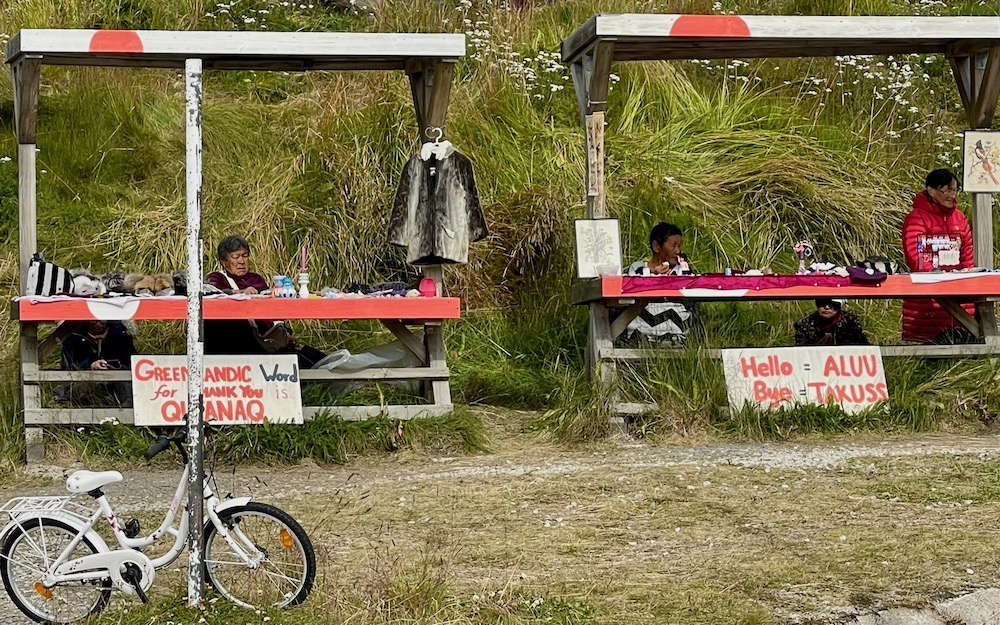
This first introduction to the Inuit culture was a surprise as I didn’t know that close to 90% of all Greenlanders are either indigenous Inuit or a blend of Inuit and Danish. The first Inuit settlements in Greenland occurred about 2500 BC. Eventually, peoples from Iceland, Norway, and Denmark populated Greenland but the Inuit culture persisted and dominated.
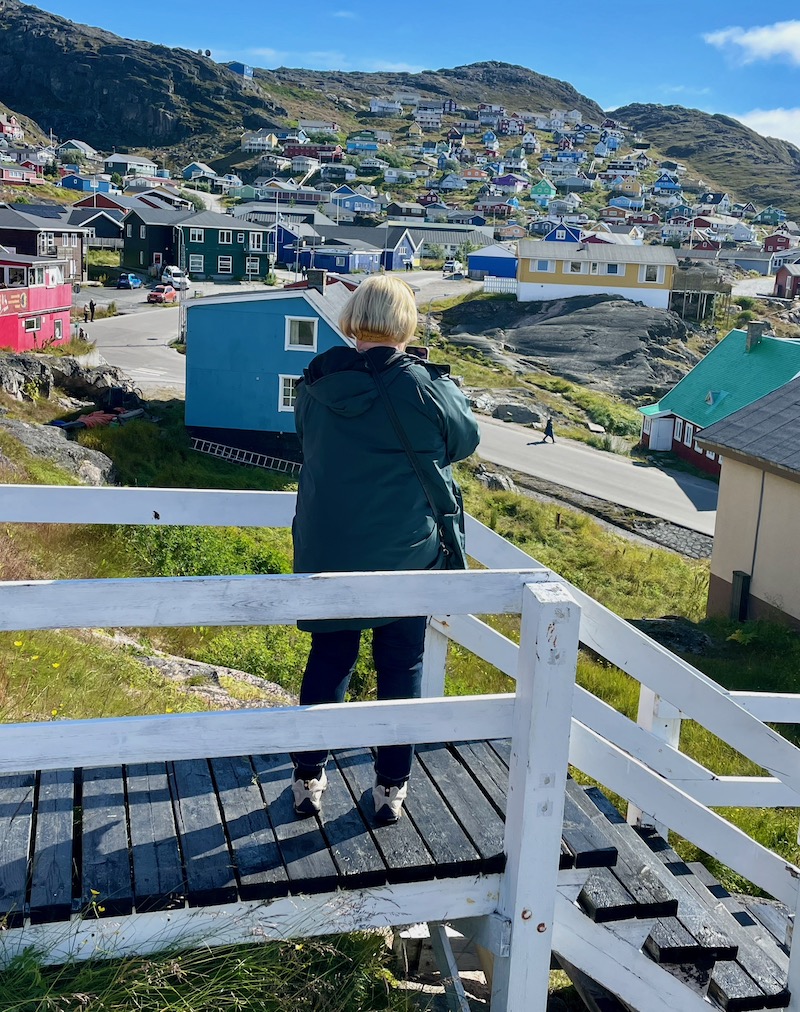
We were fortunate to get glimpses of how the Inuit live on Greenland today and it was surprisingly “modern.” We met our tour guide, Pippa, a young Greenlander college student who was wearing the usual student attire of ripped jeans, a t-shirt and casual jacket. She was so pretty and fresh with just a hint of her Danish great-grandparents. Off we went – up, up, up along a gravel-shifting path — to the top of one of the jagged hills where we had been invited to Christina’s house for tea. Pippa’s best friend is one of Christina’s 22 grandchildren, so Pippa was the perfect guide and interpreter. Her English was flawless.
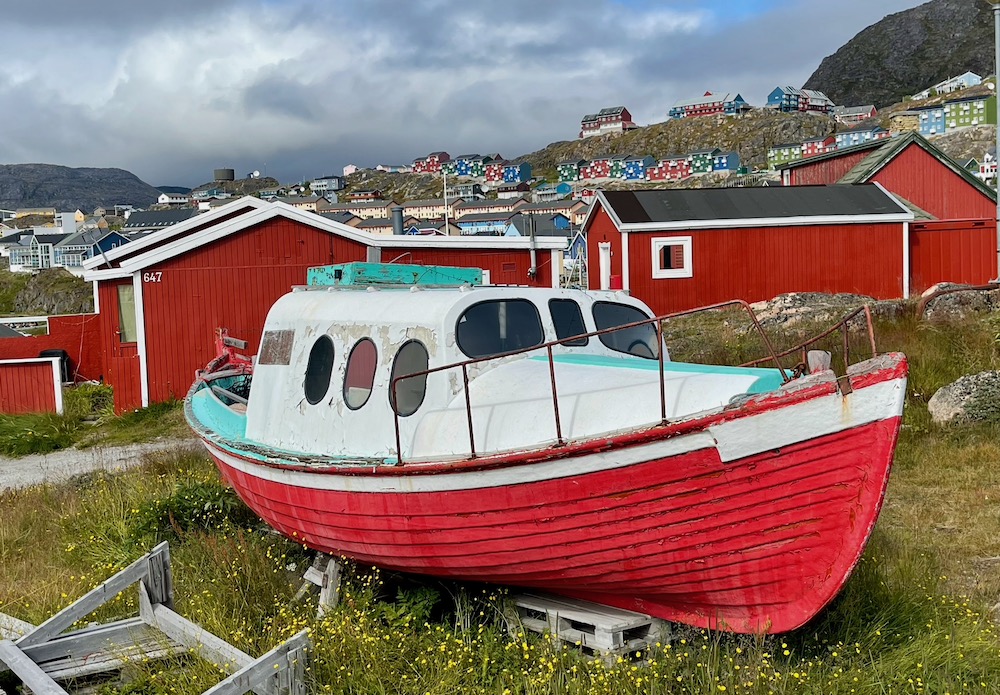
Pippa stood alongside Christina, who speaks only Greenlandic, as she welcomed us into her home full of pictures of ancestors, grandchildren, fishing scenes and Inuit ceremonial events. There were also many knickknacks displayed– just like you’d see in many American grandparents’ homes. Crocheted Afghans over every piece of furniture, ruffled curtains –but light and airy with a magnificent view of the harbor and our cruise ship below. And, surprisingly, a big-screen TV. I didn’t ask what Christina watched on TV but perhaps it was for sporting events beamed by the satellite dishes we observed on the walk up into Greenlandic homes to help get through the dark winter.
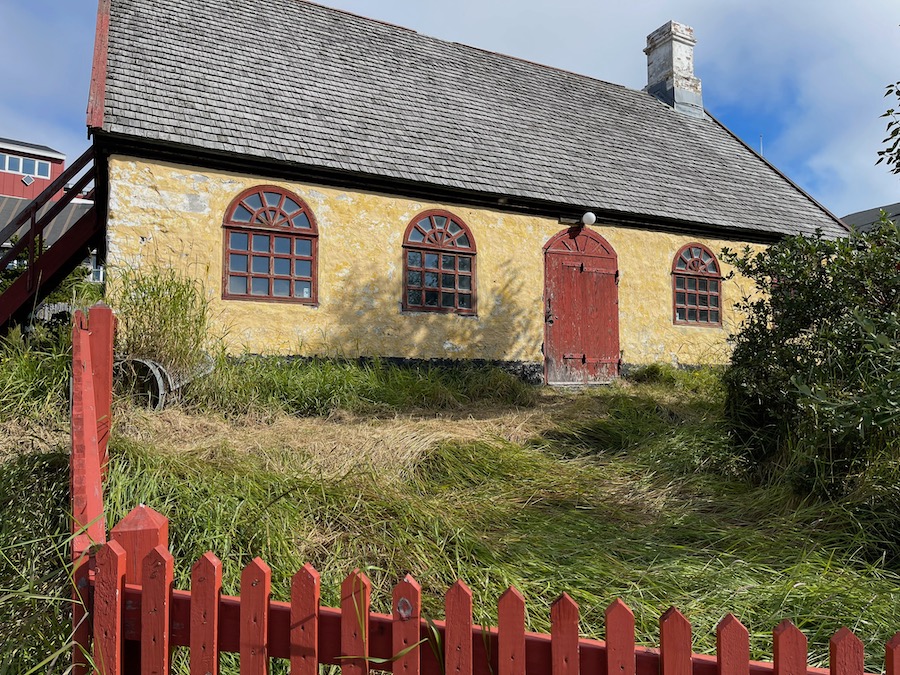
Christina had set an elaborately decorated table for ten guests and offered six different desserts that she baked herself that morning. Apple cake with shredded apple and banana topped with whipped cream was an absolute marvel. Christina was prepared to tell us about herself, life in a small village – and her marvelous grandchildren. (Just like all grandparents.) Pippa stood by her side translating patiently.
At 92 (!), Christina was a robust but tiny lady with great pride in her home and culture. She lives alone and walks that steep, steep path to the port several times a week. She plays handball, “football” and table tennis regularly and is a primary dancer in Inuit festivals and religious ceremonies held all over Greenland. Vigorous outdoor activity is essential to the Inuit culture even for nonagenarians. Her traditional costume weighs almost 20 pounds; she herself couldn’t weigh more than 110 pounds! Made up of seal skins and elaborate beading, it was quite a treasure. Her grandmother wore it first, as did her mother and she herself has designated one of her six daughters as the next to wear it.
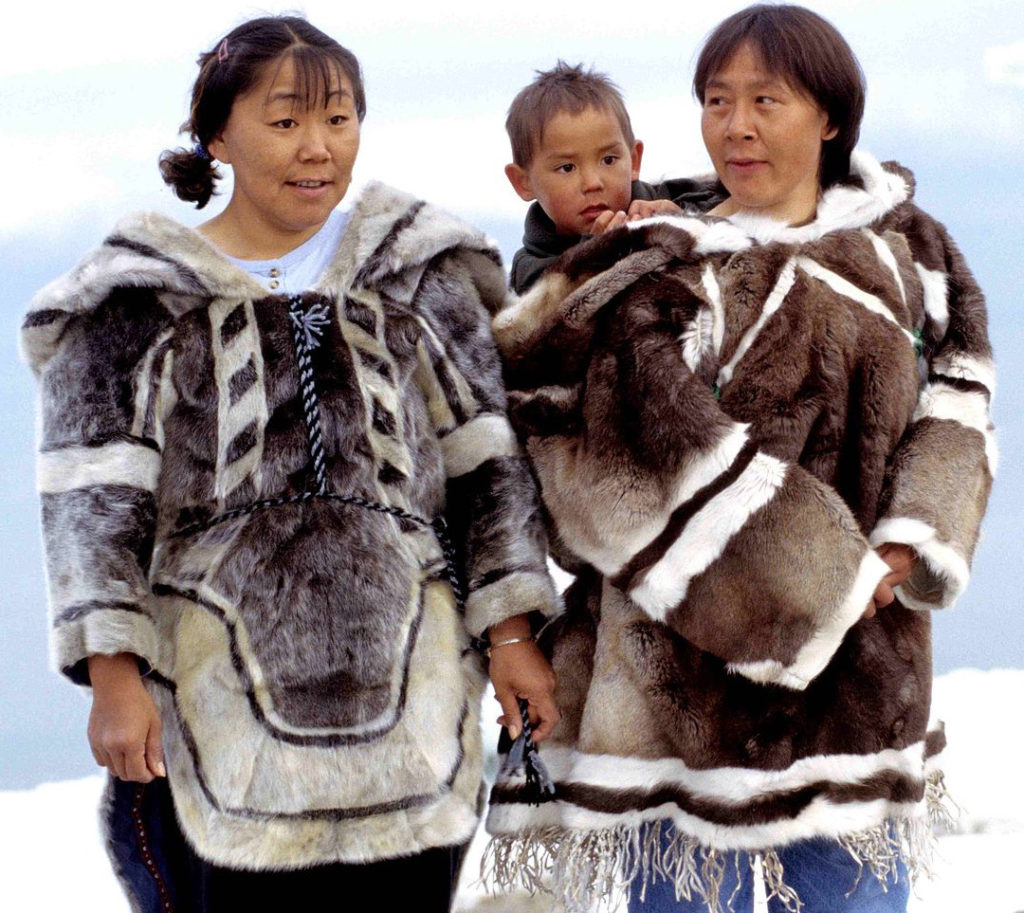
Alas, our visit was all too brief – and we had that steep and slippery walk (with no handrails of course) to negotiate before our ship would sail away. I was so struck with the contrast of the very young Pippa and the elderly Christina both epitomizing “Greenland” and its culture. Such an isolated life for Christina, but she was vibrant and engaged in everything that her constrained life offered. The pride expressed by Pippa was equally charming. I wish we had had more time to explore her life too but the glimpse of this culture was instructive and delicious.
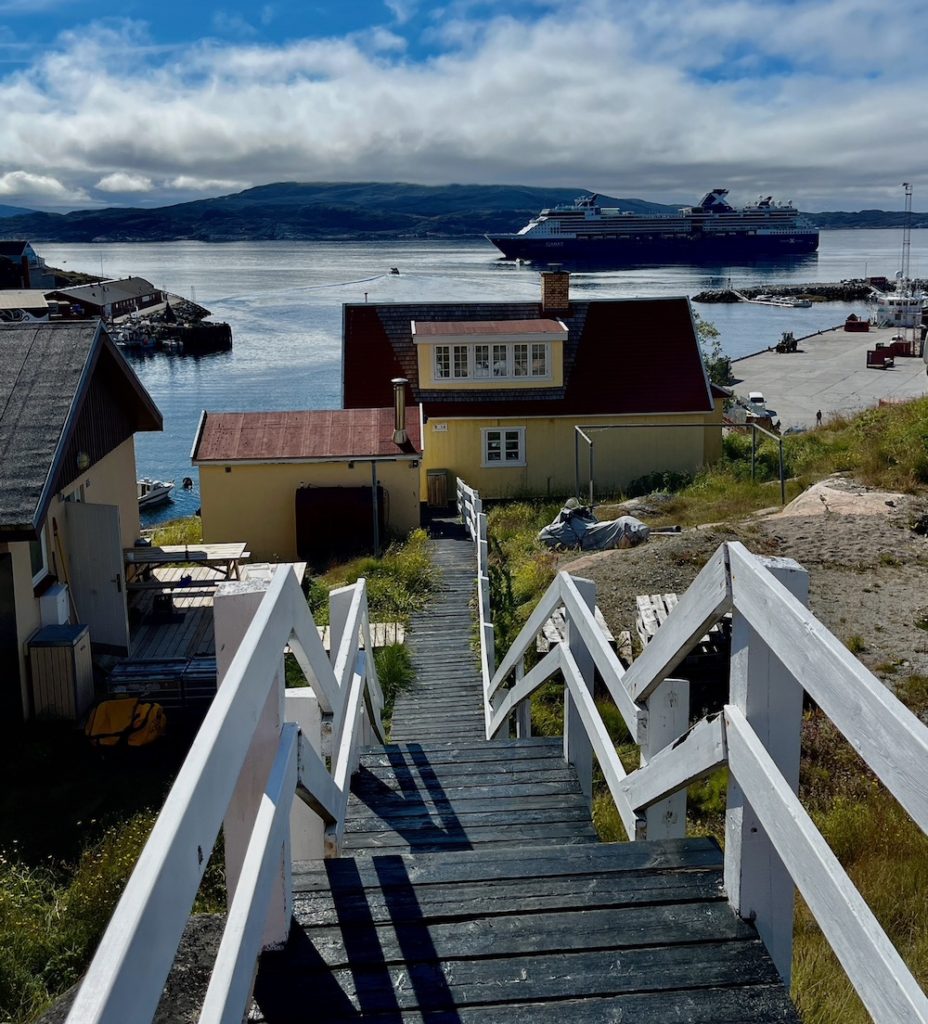
ON TO NEWFOUNDLAND, NOVA SCOTIA, AND FINALLY: BOSTON
Thank you, Pat!
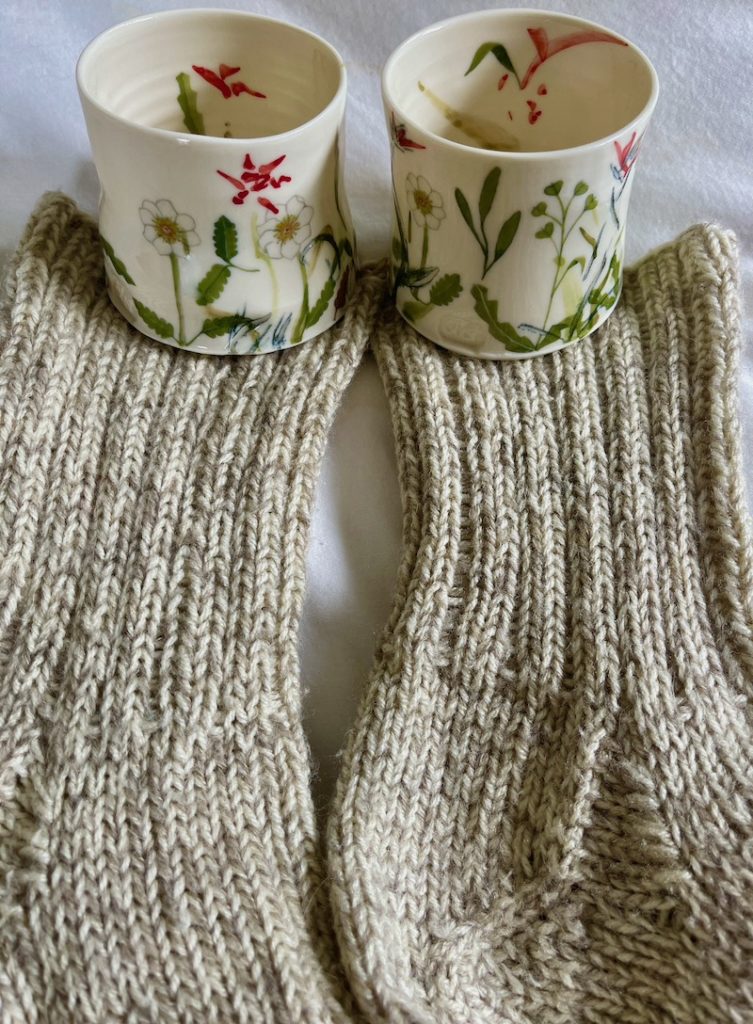
Pat and Jean learned far more about Greenlander culture than we did, although Padre did find M and M’s at the Qaqortoq grocery store (he always finds M and Ms. It’s what he does.) I spent the last of our euros on wool socks for my cold feet, handknitted by the craft-fair Inuit ladies.
As we sailed away and the tiny village of Qaqortoq receded into the distance, I wondered how its residents cope once the ravaging winds and icy storms return in a few short weeks. Christina’s ancestors found ways to survive despite the climate challenges, obviously, since Greenlanders have inhabited this small village since prehistoric times.
Me? I’ll think of this picturesque tiny Artic village, perched on the edge of the sea the next time I complain about a Seattle snowstorm. While I’m pulling on my beautiful hand-knitted Qagortoq socks by a crackling fire.
Just two more stops on our way home to the good old USA, and I’ll let the photos tell those stories:
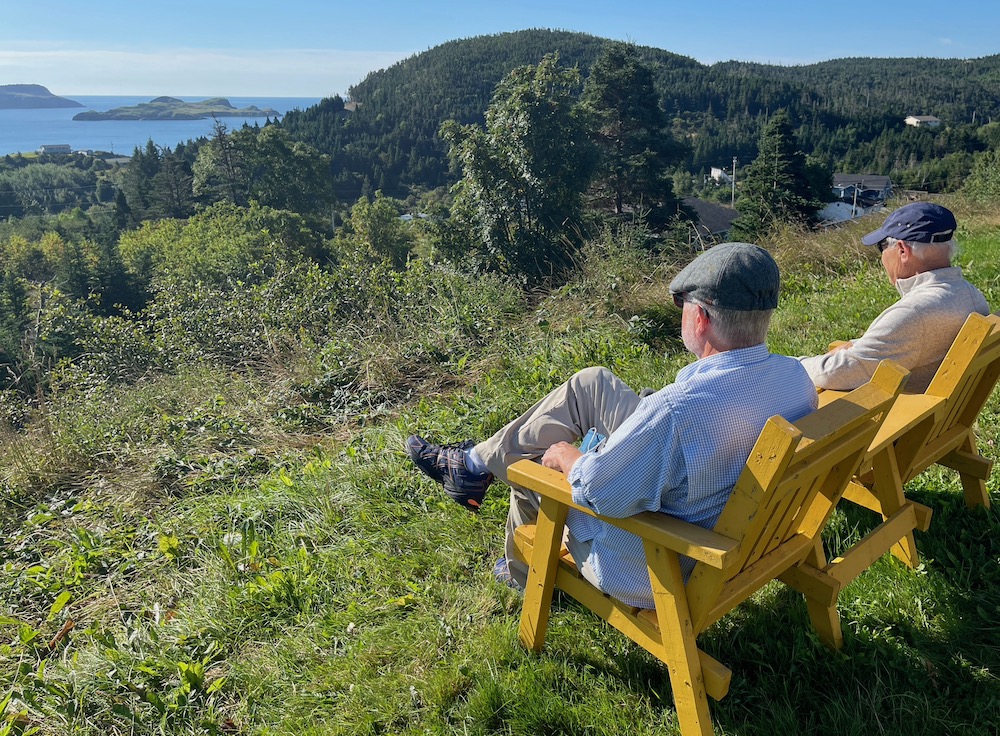

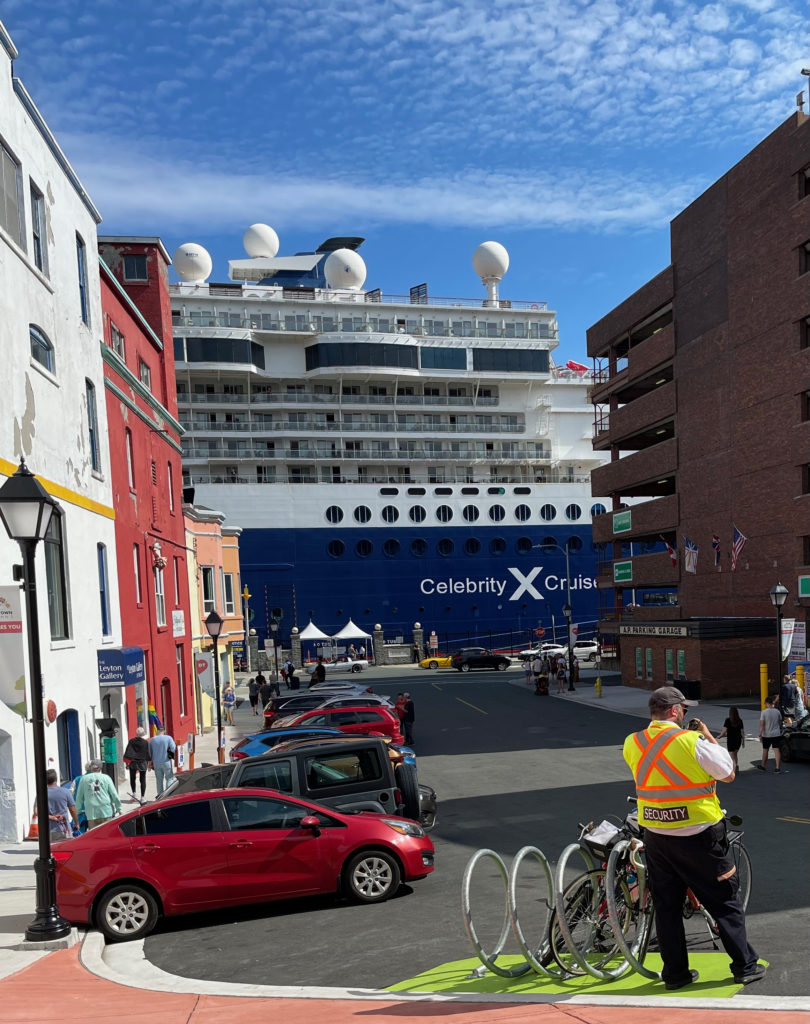

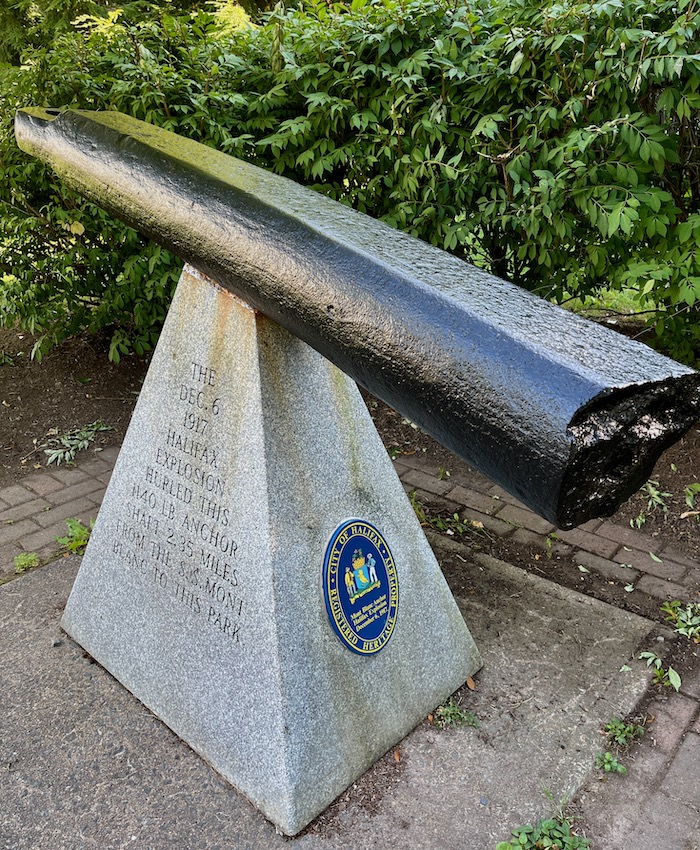
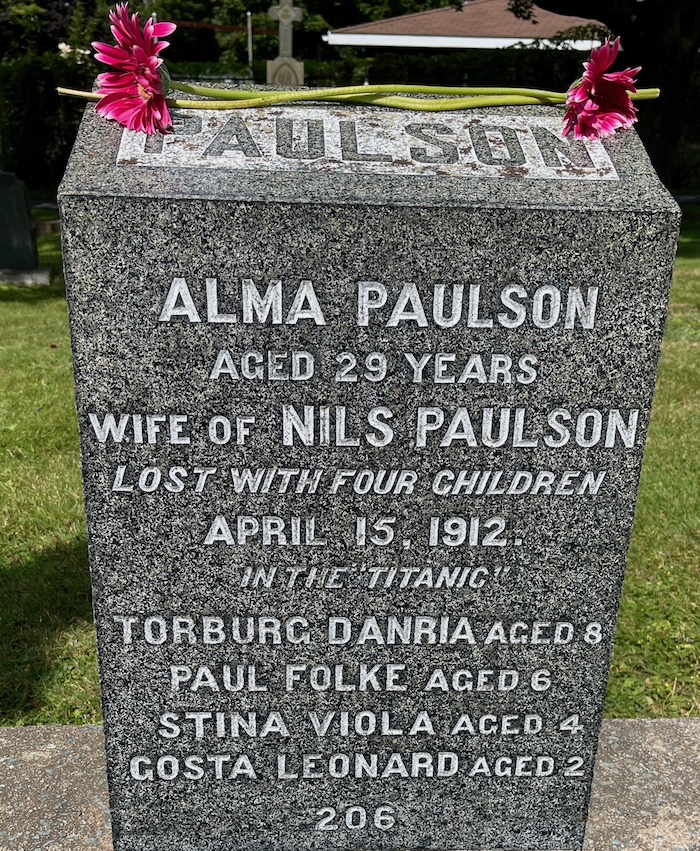
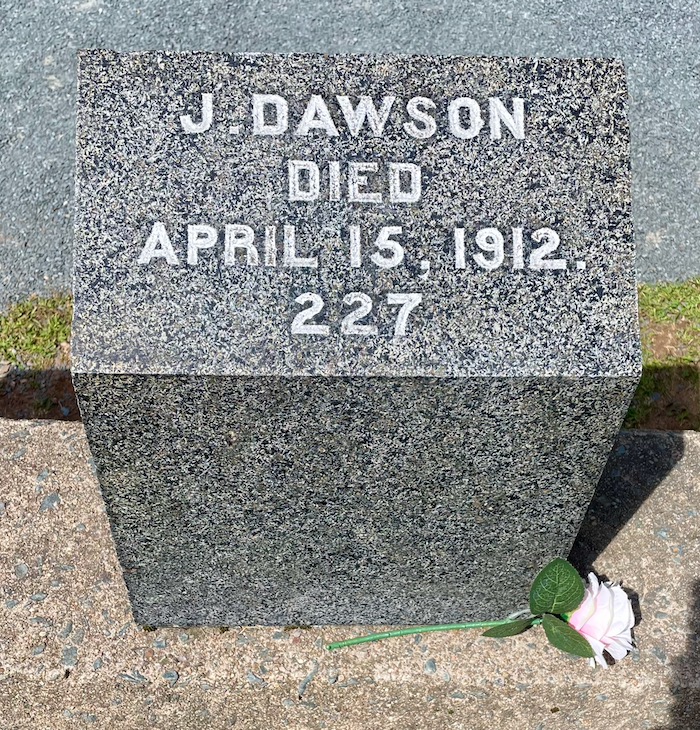
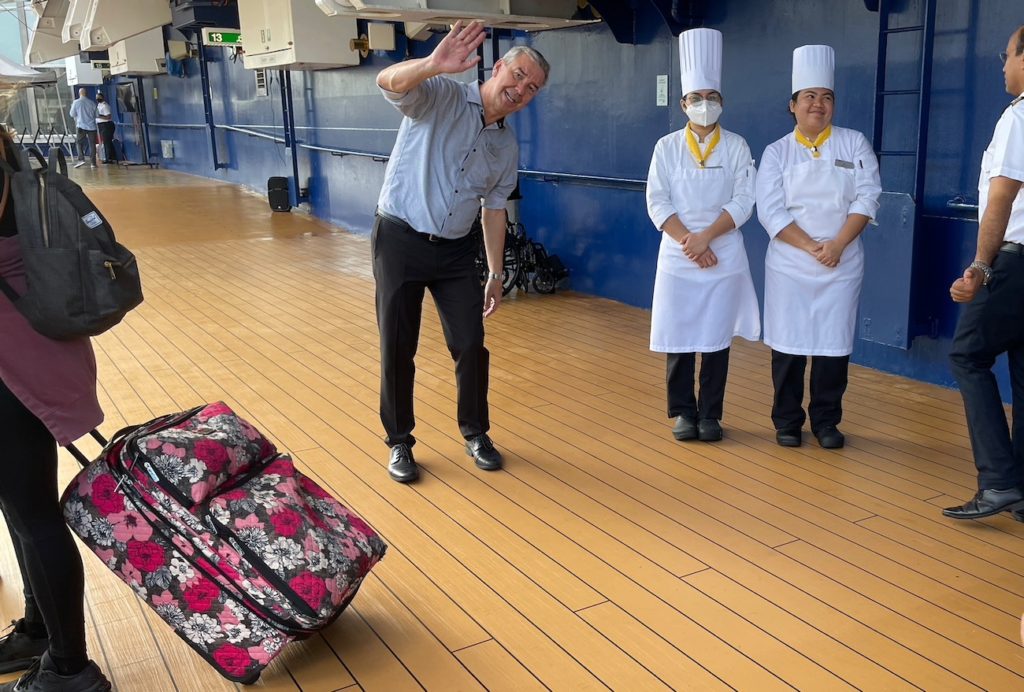
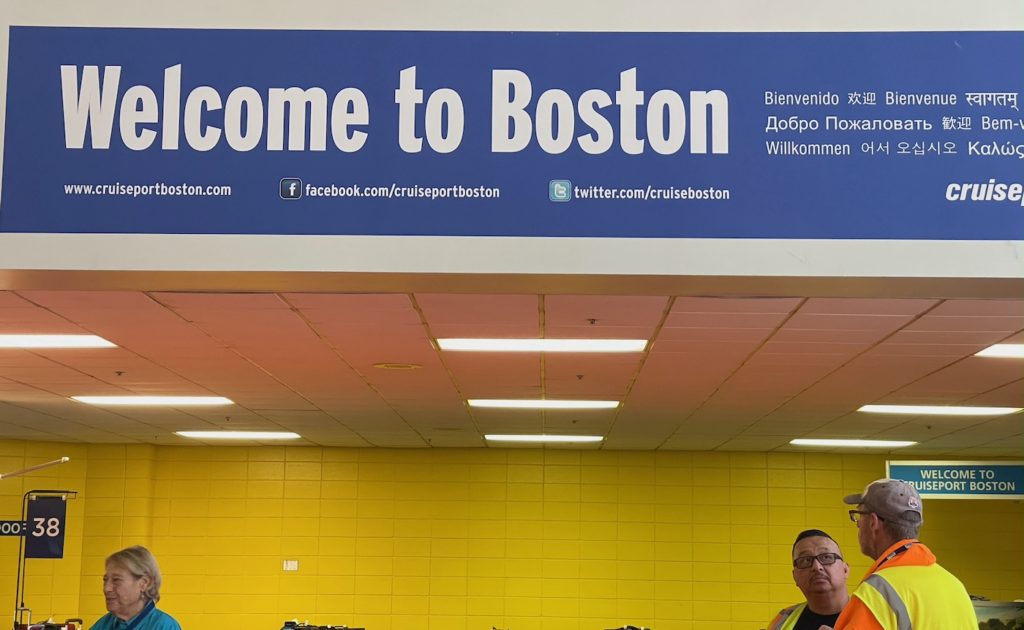
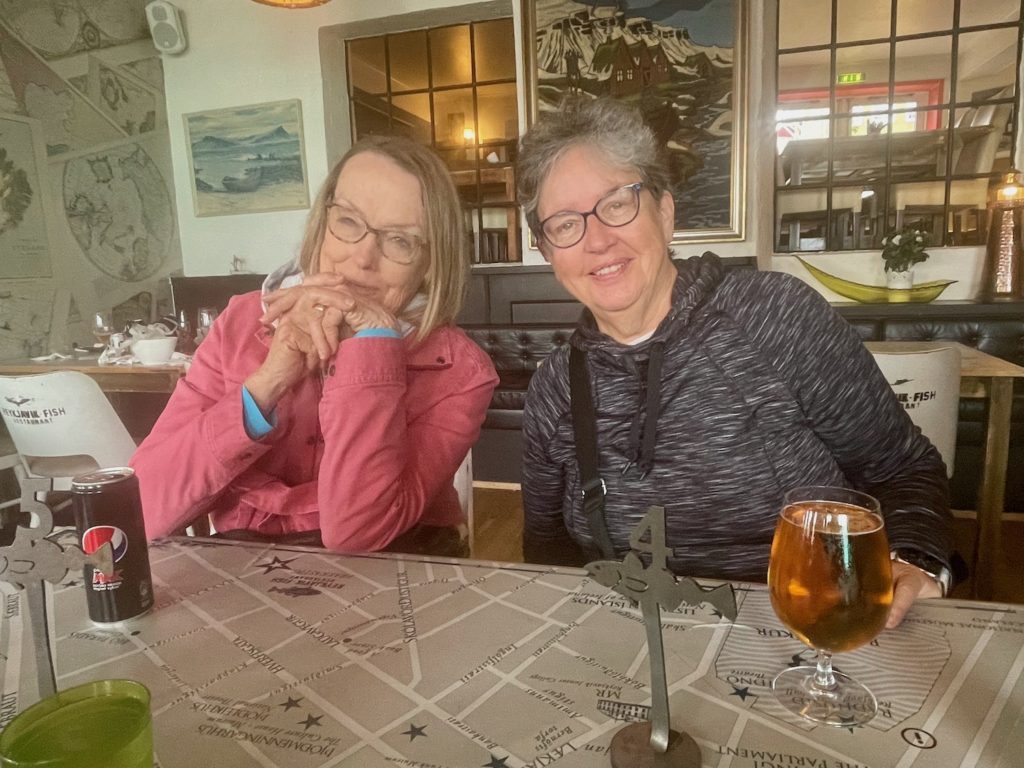
So we’re home now, prepping for the autumn rains and putting the garden to bed. Fall projects will keep us close to home for a few months, until we inevitably return to KEY WEST. Snowbirds like us are NOT tough like Christina, the Greenlander. No not at all. And yes – the lovely wool socks go with me to Key West. Cold toes know no season, I say.
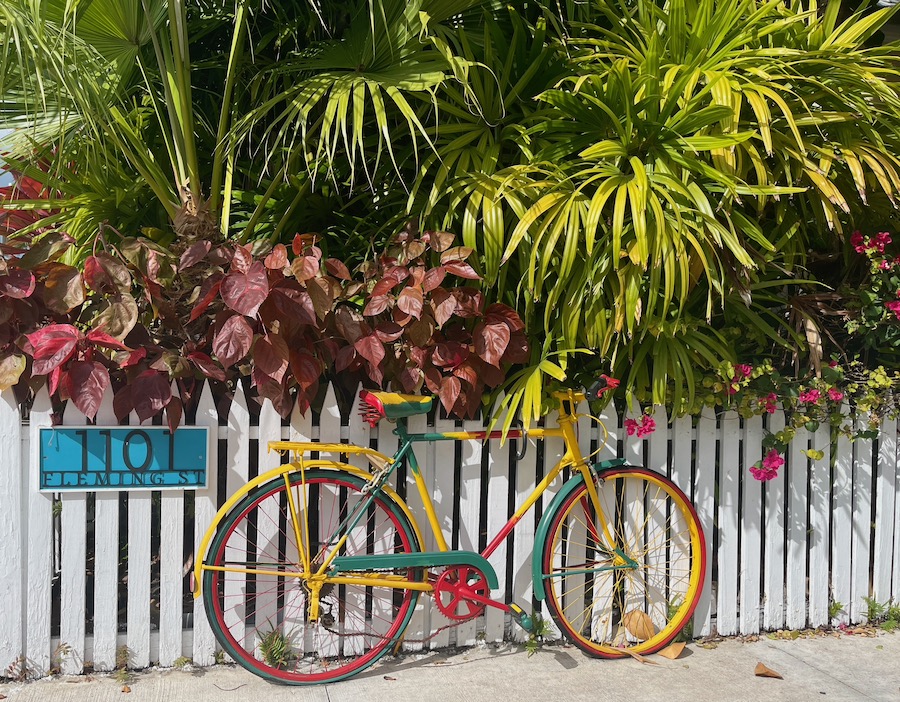
Thanks, as always everyone, for following along!
